The 13-year-old girl had no pregnant but with a big belly, and also suffered from nausea, vomiting and pain from time to time. It was a "teratoma" she had, with hair, teeth and other tissues had developed in the tumor. Fortunately, the tumor was successfully removed with the help of the team at Guangzhou Fuda Cancer Hospital.
In October this year, Fenfen (pseudonym) from Indonesia went to the local hospital for examination due to repeated syncope and found that there were cystic and solid tumors in the pelvic and abdominal cavity, and she was considered to have malignant ovarian tumors. For further diagnosis, they came to Guangzhou Fuda Cancer Hospital. After examination, the doctor found that the tumor had covered the entire abdominal cavity, adjacent blood vessels, abdominal and pelvic bowels, uterus, bladder, and bilateral ovaries was compressed and displaced. After discussion among experts, it was initially considered to be a teratoma, and the pathological results of biopsy confirmed that the lesion was consistent with (abdominal) mature teratoma.
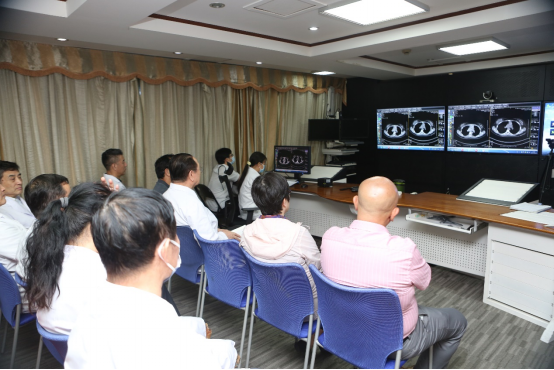
▲Multidisciplinary consultation to determine surgical treatment
Teratomas usually do not regress on their own. If they continue to grow, they may cause acute abdomen symptoms such as abdominal distension, tumor pedicle torsion, and tumor rupture. Moreover, there is a certain risk of malignant changes, therefore, surgical removal is required as soon as possible. However, surgical removal of giant abdominal tumors involves certain risks. For example, a sudden drop in intra-abdominal pressure will cause blood to suddenly accumulate in the intra-abdominal blood vessels, causing a sharp reduction in return blood flow and cerebral blood supply, leading to shock or heart failure, etc. The tumor is huge and adheres to the intestines, uterus, bladder, and both ovaries, forcible resection may cause increased postoperative complications. Or a slight mistake during the operation may cause massive bleeding. This is a critical challenge for both Fenfen and Fuda.
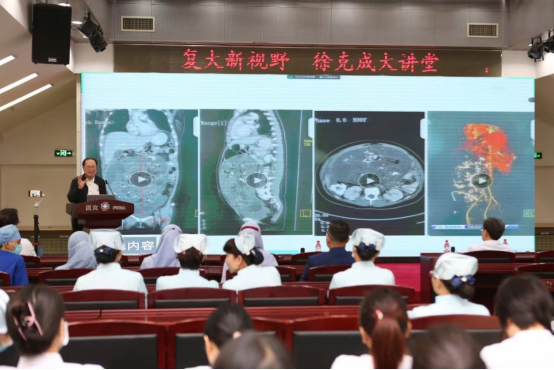
▲General president Xu Kecheng spoke at the lecture: Gather the strength of the whole hospital to protect patients’ health![]()
After many times of multidisciplinary consultations, preoperative preparations were done. With the encouragement of her family and medical staff, Fenfen was sent to the operating room at 14:00 on November 5. oncologists, nurses, and caregivers worked together for one wish - "Go well! Be safe!"


▲President Xu Kecheng, Chairman of the Indonesian Diaspora Network-China Yenni Thamrin visit Fenfen before the operation.
At 14:50, Fenfen's abdominal cavity was opened under anesthesia, exposing the huge tumor. The tumor grew from the bottom of the pelvic cavity and extended to the diaphragm. The operation was carried out step by step as planned. After 40 minutes, the giant tumor was removed from the abdominal cavity, weighing 6 kg in total and measuring 32 × 25 × 23 cm. Considering Fenfen's young age, the ovaries were preserved to protect her reproductive function while removing the tumor.
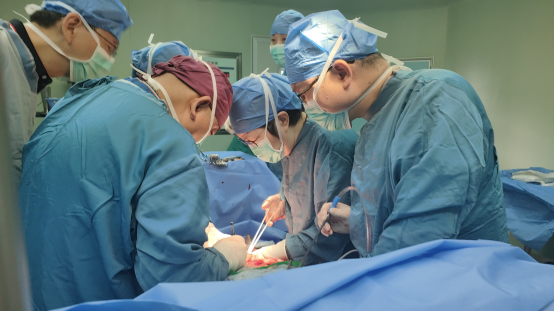
▲The amount of blood loss during the operation was about 50ml, and 500ml of blood and plasma were transfused.
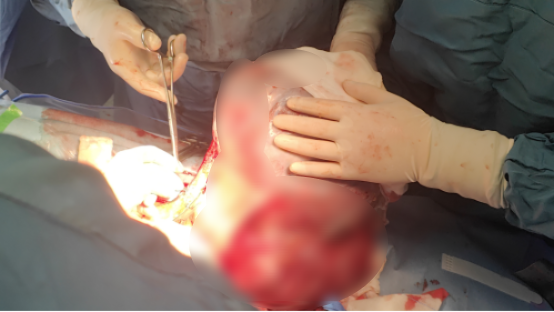
▲The giant tumor was “moved out”
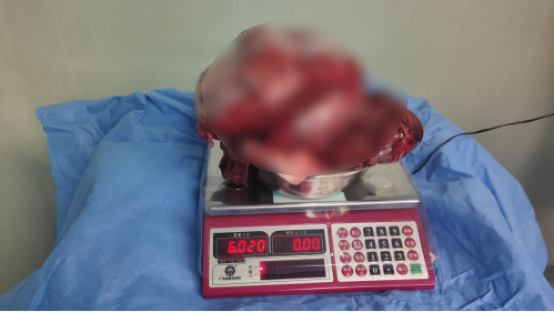
▲The tumor weighs 6 kilograms
Over the past 20 years, Guangzhou Fuda Cancer Hospital has been marching forward bravely amid challenges. Fuda has performed many similar surgeries before, such as Mingzi from western Guangdong in 2001, who suffered from a giant tumor in his neck; Nana from Saudi Arabia in 2010, who was only 11 months old and had a tumor in her abdominal cavity weighs 3.5kg; Bingbing from Harbin in 2014, her abdominal cavity giant tumor made her "not able to see her feet for 4 years." Now they are all free from the "giant tumor", healthy and are enjoying life.
Medical Tips
What is a teratoma?
Teratoma is a tumor formed by the mutation of immature germ cells in the human body. It most commonly occurs in the ovaries, testicles, and coccyx. It can also occur in the nervous system and abdominal cavity. It can differentiate into tissue components in human organs, so the tumor will contain hair, grease, skin, teeth, bone fragments, and may also contain tissues such as muscle, gastrointestinal, thyroid tissue, etc. More than half of the tumors are showed at birth. But many of the tumors are hidden and will not be seen until they grow older and have a bigger belly.
This tumor is rare, occurring in approximately 1 in 40,000 newborns. Most teratomas have no symptoms, but when they grow too large, they may cause abdominal distension, mild abdominal pain, and compression. When a teratoma twists, symptoms such as cramping, nausea, and vomiting will occur. Although most teratomas are benign, there is always a small number of teratomas that are at risk of malignant transformation. If they are not removed, there is always a time bomb in the body. Moreover, the younger the teratoma patients are, the sooner they should be surgically removed to prevent malignant transformation.